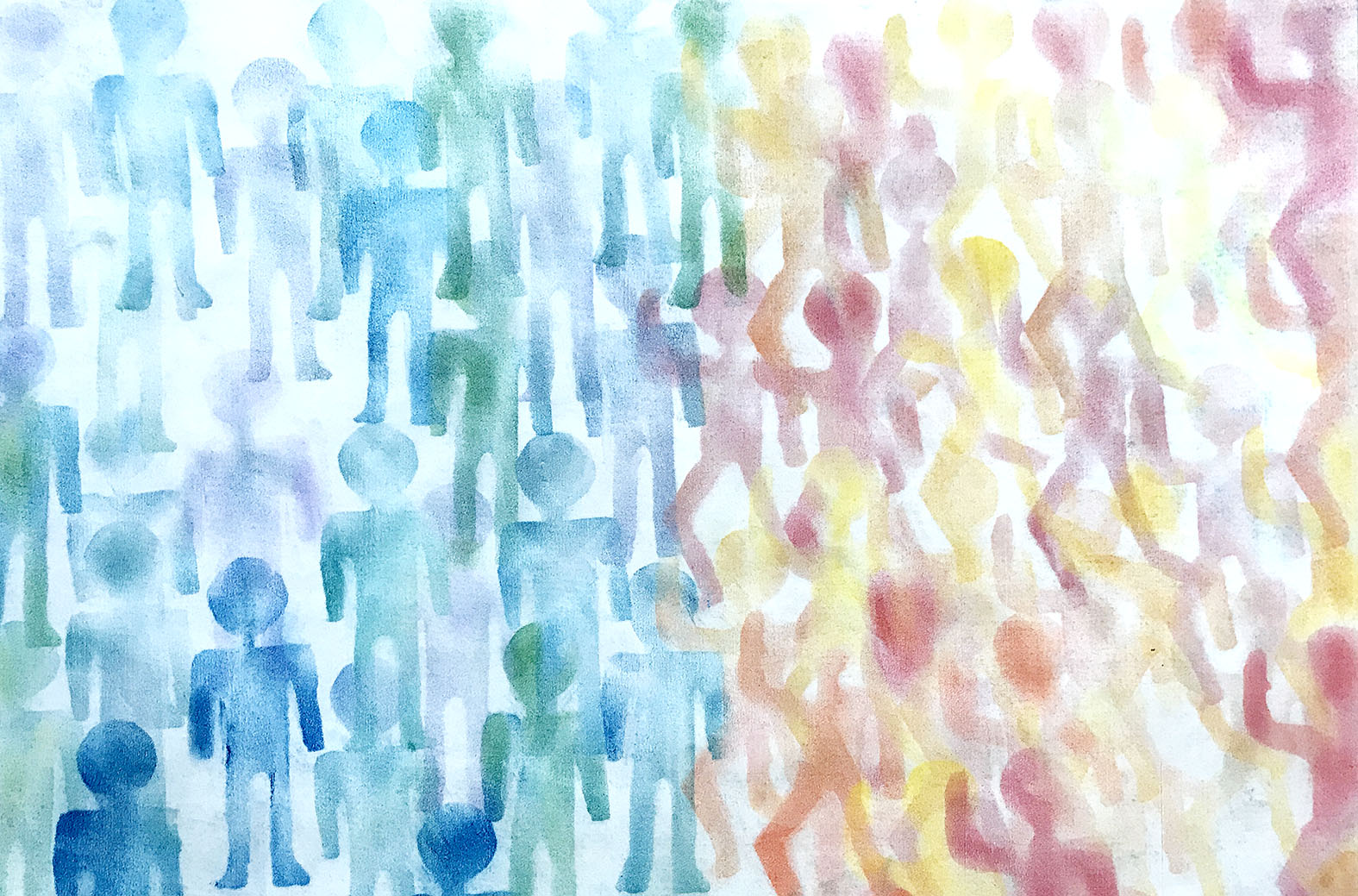
Finding purpose in life, accepting who we are, and expressing our true feelings and thoughts – to name a few – are examples of struggles that many people face every day. Many of these struggles have even been exacerbated by Covid, leading to increased loneliness, social disconnection, and other mental health conditions.
However, in Western countries, the attention has remained largely on technology – specifically AI – and the development of tools and platforms – social media, smartphones, AI, appliances – to optimize life activities – traveling, working, interacting with others, exercising. To an extent, it seems as if creating distractions and diverting attention from personal struggles would be easier than supporting people’s mental health and inner growth. Not confronting these issues won’t make them go away. This is why energy should be placed on equipping individuals with the mindset and competences to face and deal with different types of problems, from simple and complex to emotional and rational.
The Education Response
Fortunately, the number of educational institutions and organizations that are prioritizing people’s inner growth and wellbeing is increasing globally. For instance, in the education context, the self-determined learning model, which focuses on helping students develop their own journey based on their needs and interests, has been implemented in many programs and universities. Similarly, some educators work with metacognitive strategies to help students deepen awareness about their cognitive mechanisms, strengths, and areas where they need to work on, so they have more tools to manage stress and negative behaviors. Multiple studies have stressed the importance of social-emotional learning to help students focus inwards, build authentic relationships, and develop emotional skills. Mindfulness practices are increasingly integrated into Western systems (from organizations and colleges to government) as tools to help people be present and more attentive to their senses.
From Outside Education
The Inner Development Goals (IDGs) framework emerged as a response to society’s incapacity to reach the 2030 Sustainability Development Goals. It took a large-scale issue – like climate change – for powerful organizations and communities to realize that inner growth should come first if we want a healthier society and safe planet. The IDGs were defined three years ago as a framework composed by 23 competences grouped under five dimensions – Being, Thinking, Relating, Collaborating, Acting – that should be integrated into everything we do in order to be prepared to save the planet. However, the relevance of these competences goes beyond global challenges, to the extent that multiple organizations have already adopted the framework to focus inwards and help people develop a caring and resilient mindset.
None of these competences is intrinsically novel; what is novel is the strong focus on personal inner growth, empathy, and compassion (for oneself and others), as well as on wellbeing and happiness. Without developing these qualities, we cannot build a strong foundation to successfully tackle other challenges. Many of these competences have been highlighted before in other frameworks, and probably, many people are already practicing them in organizations, courses, and other contexts. The emphasis on outer change – e.g., sustainability goals – is what has given them attention and visibility.
The Missing Piece
Interestingly imagination is not one of the 23 competences; and creativity is only included in the fifth dimension – Acting, which indicates a focus on doing (being creative as being artistic), rather than on conceiving ideas. However, the practice of most of the IDG competences has direct impact on people’s imagination. By connecting with our essence and who we are, we can start identifying our mental blocks and unlocking our imaginative mindset. Allowing ourselves to look at the world and our own life from unconventional perspectives, dream about what our ideal life would be, and envision alternative realities and paths forwards.
The act of imagining precedes the act of creation. The more disconnected we are from our true selves, the more our imagination is rooted only on what we know and have seen before – imaginal ideas (Robinson & Robinson, 2022). Our attitude also impacts the result of our imagination. Mastery of artistic materials and tools alone is nothing without imaginative ideas.
We need imaginative ideas to generate change in the world. As Robinson and Robinson (2022) explain, this type of ideas is based on fantasy, dreams, things that we cannot sense, or have not seen before. Mental health, climate change, pollution, social injustice, poverty; these are only examples of systemic issues we have not been able to address. Despite the many efforts, we continue to approach these issues from similar perspectives. And when we do have different ideas, we struggle to envision how we could make them a reality and end up discarding them.
Freeing our imagination is inner empowerment. By learning how to free ourselves from our self-imposed constrains, we give us permission to dream and seek what really need, not what others expect from us or what we have been traditionally done. This is the seed for individual and collective happiness.
Leave a Reply